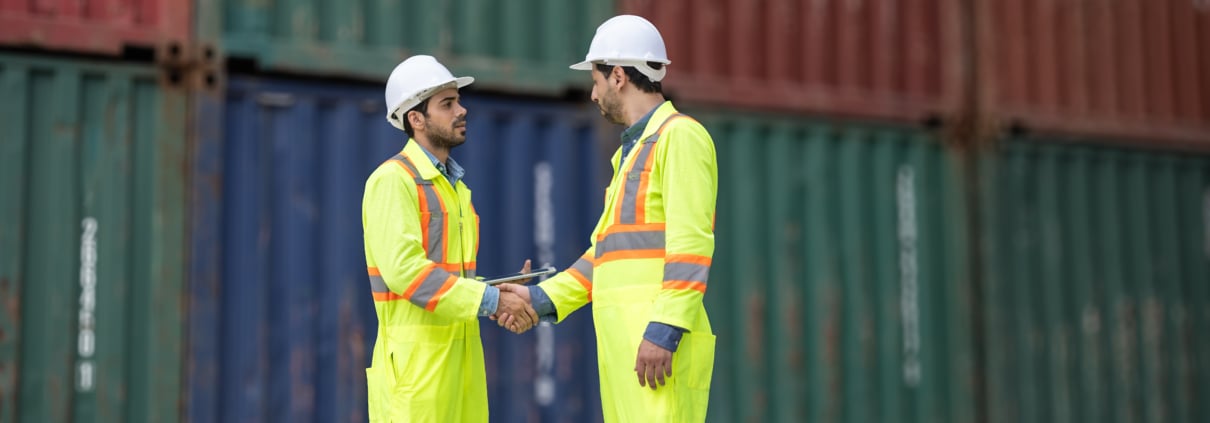Import regulations for India: What you need to know!
- India has strict import regulations and an extended documentation requirement
- Membership of the WTO and numerous free trade agreements offer market access with favourable tariffs
- Electronic customs clearance systems such as SWIFT and ICES facilitate the procedures
- Import duties and GST are crucial for tax compliance
- Export zones offer tax advantages and facilitate trade
Importing goods into India requires a thorough understanding of the current rules and regulations. Compliance with these regulations is crucial to avoid delays and penalties.
Basics on the import regulations to India
India has introduced an extended documentation requirement since 2015. This includes the certificate of residence and Form 10F. The No Permanent Establishment Declaration is also required. The 15-digit "Goods and Services Taxpayer Identification Number" (GSTIN) is required for the import of goods.
This has replaced the Import Export Code (IEC). Nevertheless, some companies still require both identification numbers. The registration of the GSTIN requires the IEC and the Permanent Account Number (PAN). These documents ensure that imports are processed correctly.
- Certificate of residence and Form 10F are mandatory
- GSTIN has replaced the Import Export Code
- Registration requires IEC and PAN
International trade relations and agreements
India is a member of the World Trade Organisation (WTO) and is committed to its principles. There are numerous free trade agreements, particularly in the Asia-Pacific region. These include preferential market access. The most important agreements include the ASEAN-India Free Trade Agreement and CEPA agreements with countries such as South Korea and Japan. These agreements allow customs benefits for certain goods, although the rules of origin must be strictly adhered to.
- India is a WTO member and has free trade agreements
- Agreements offer favoured market access
- Rules of origin must be strictly adhered to
India Customs: Handling and procedures
Customs clearance in India is carried out according to the harmonisation and customs value system. Registration with the foreign trade authority DGFT is mandatory. Customs declarations are processed electronically via the Indian Customs EDI System (ICES). The introduction of the Single Window Interface for Facilitating Trade (SWIFT) has simplified the processes.
Trustworthy companies benefit from programmes such as the Authorised Economic Operator (AEO), which offers concessions. Import duties are due upon entry into free circulation. The importer must ensure that all necessary certificates are available.
- Registration with DGFT is required
- Use of ICES and SWIFT for efficient customs clearance
- Programmes such as AEO offer benefits
Import duties and taxes
India levies import duties based on the Harmonised System. The customs tariff is based on the CIF value. In addition to import duties, there are levies such as the Customs Agriculture Infrastructure and Development Cess (AIDC) and the Social Welfare Surcharge. The Goods and Services Tax (GST) was introduced in 2017 and replaces many indirect taxes. The GSTIN is crucial for tax compliance.
Note: Import duties in India are calculated according to the CIF value and supplemented by additional levies. GST is a key component of the tax system.
Special customs procedures
The A.T.A. carnet can be used for the temporary import of trade fair goods. The Active refinement enables duty drawbacks for exported finished goods. Customs warehouses offer the possibility of storing goods duty-free until they are finally processed or exported further. The re-importation of goods after processing abroad is also regulated.
- Carnet A.T.A. can be used for temporary importation
- Active Refinement enables duty drawback
- Bonded warehouses offer duty-free storage
Import bans and restrictions
India has clear rules for prohibited and restricted goods. These are laid down in the Indian Trade Classification. Some goods require special authorisation from the DGFT. Metal products are subject to special import controls. Registration is required for the import of iron and steel products.
Note: Strict rules and special authorisations are often required to ensure that only permitted goods are imported.
Standards and norms
The Bureau of Indian Standards (BIS) defines technical regulations. These relate to electronic devices, textiles and medical products, among other things. Telecommunications equipment must be certified in advance by the relevant authority. Compliance with these standards is essential for market access.
- BIS defines technical regulations
- Certification required for telecommunication devices
- Compliance crucial for market access
Export zones and special economic zones
Export-orientated companies can benefit from preferential treatment in special economic zones (SEZs). These zones offer tax advantages and facilitate trade. Goods can be brought into the SEZ duty-free and there are extensive tax breaks for companies.
- SEZs offer tax advantages
- Duty-free import into SEZ possible
- Extensive tax relief for companies
Practical tips for handling import regulations in India
Efficient customs clearance requires thorough preparation and knowledge of the procedures. Companies should inform themselves about the requirements and work with experienced customs brokers. Successful importers ensure compliance with all regulations and make use of the programmes and simplifications on offer.
- Preparation and knowledge of the procedures are crucial
- Cooperation with experienced customs brokers recommended
- Compliance with regulations promotes successful imports
India's import regulations are comprehensive, but with careful planning and compliance, they can be overcome. Companies that play by the rules and take advantage of the facilities on offer can operate successfully in the Indian market.
Efficient logistics solutions in accordance with the import and export regulations for India

Experience the advantages of a full-service logistics partner with Dörrenhaus. Whether you need the Import or export of goods to India plan, we offer you customised solutions that meet your specific requirements.
Our sea freight option enables the safe and cost-efficient transport of large quantities of goods, while our fast air freight services are ideal for urgent deliveries. With our container train, we offer a faster and cheaper alternative to traditional methods.
Our comprehensive support covers everything - from documentation to customs clearance. Rely on our network of experts on the Indian subcontinent and enjoy individual support with personal contacts for your projects. Contact us today and start your India project with Dörrenhaus.
FAQ
What do I need to bear in mind when dealing with the Indian authorities?
When dealing with the Indian authorities, it is important to note that communication often takes longer. Make sure that you are in contact with the relevant local authorities in order to complete all formalities correctly.
What are the most important documents for a smooth export to India?
The most important documents include the commercial invoice, the certificate of origin and the GSTIN. It is crucial that all documents are up to date to avoid delays at customs.
Which imported goods are banned in India?
In India, certain goods such as red sandalwood products and ivory are banned. Importing such goods can lead to severe penalties, including heavy fines and legal consequences.



